#St. Columba
Text
#OTD in Irish History | 22 August:
565 – St Columba reports seeing a monster in Loch Ness, Scotland.
1755 – Birth of General Jean Joseph Amable Humbert. He was a French soldier, a participant in the French Revolution, who led a failed invasion of Ireland to assist Irish rebels in 1798.
1791 – Theobald Wolfe Tone publishes “An argument on behalf of the Catholics of Ireland”.
1798 – Birth of doctor, writer, abolitionist and…

View On WordPress
#irelandinspires#irishhistory#OTD#22 August#Bandon#Beal na mBláth#Catholic Synod#Clonakilty#Co. Cork#General Jean Joseph Amable Humbert#History#History of Ireland#Ireland#Irish Civil War#Irish History#Irish War of Independence#Jimmy Barry Murphy#John Keegan Casey#Loch Ness#St. Columba#Theobold Wolfetone#Today in Irish History
10 notes
·
View notes
Photo
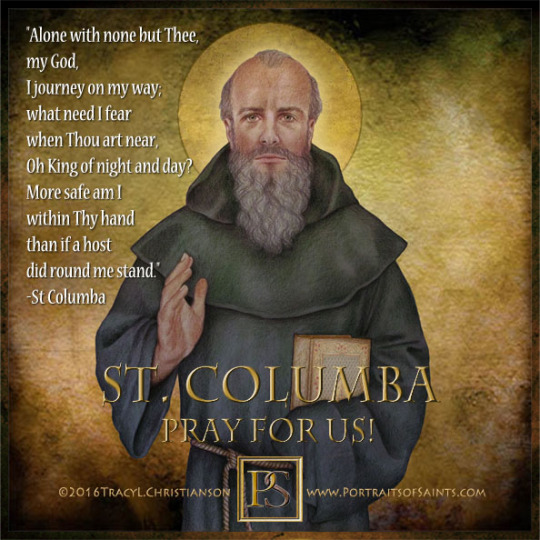
Saint Columba
521-597
Feast day: June 9
Patronage: Ireland, Scotland, Derry, bookbinders, poets, floods
Saint Columba was born in Ireland of royal descent. He studied for the priesthood under many prominent churchmen, including St. Finnian, eventually becoming abbot. In 563, he sailed to Scotland evangelizing the pagans and establishing monasteries, including the abbey on Iona. Saint Columba is considered one of Irelands 12 Apostles loved by both the Irish and Scots.
Prints, plaques & holy cards available for purchase here: (website)
82 notes
·
View notes
Photo
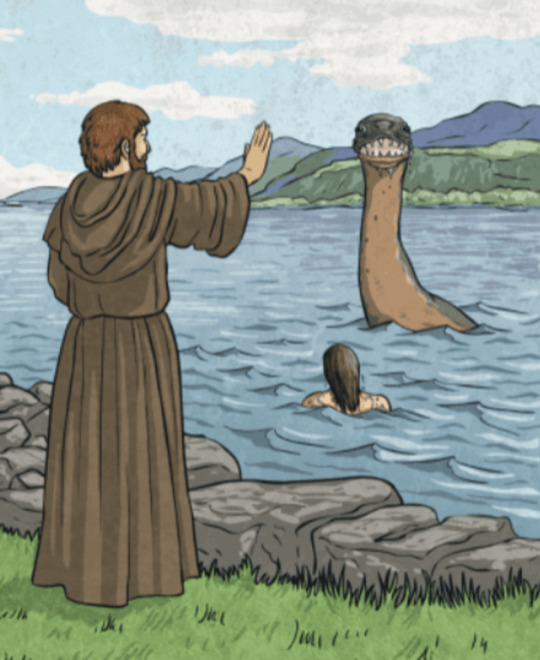
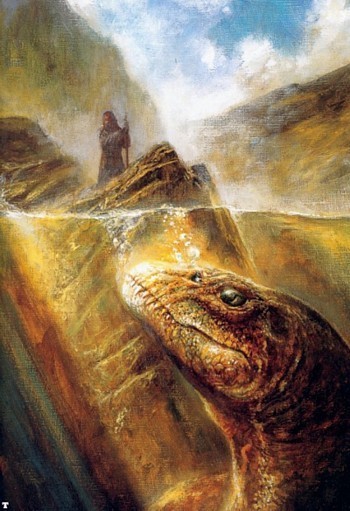
On the 22nd of August 565 the Loch Ness Monster was invented, or first spotted, depending on the way you look at it!!
The Loch Ness Monster has long fascinated Scots and tourists alike, with regular reported sightings of the aquatic beast. But the earliest written reference linking such a creature to Loch Ness in the Scottish Highlands can be found in the biography of Saint Columba, the man credited with introducing Christianity to Scotland
Columba was said to have been on his way to visit a Pictish king when he stopped along the shore of Loch Ness. Seeing a large beast about to attack a man who was swimming in the lake, Columba raised his hand, invoking the name of God and commanding the monster to “go back with all speed.” The swimmer was saved and Columba praised for his efforts.
Later revered as a saint, Columba’s life was written about 100 years after the supposed Nessie event, which leads some historians to doubt its accuracy…...no shi!
186 notes
·
View notes
Text
8th June
St Columba’s Day
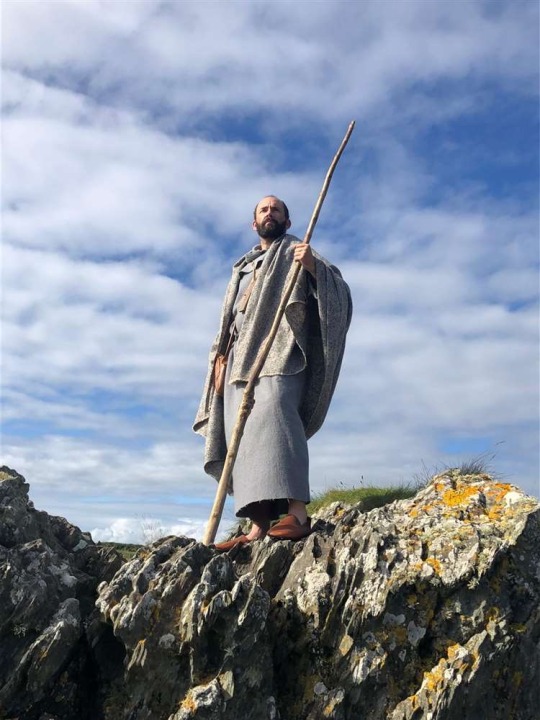
Colmcille (St Columba) on High. Source: BBC Alba and The Northern Scot website
Today is St Columba’s Day. Despite his saintly title “The Dove of Peace” (Colmcille in Gaelic), Columba had a somewhat violent temperament. A dispute over the authorship of a Psalter with a fellow cleric in his native Ireland led to an actual battle between their respective bands of followers, until the Irish Church intervened and sent Columba off to Scotland to convert the still pagan Picts to Christianity. But bad temper and violence accompanied even his missionary work. Slipping on a flounder one day, Columba is said to have cursed the unfortunate fish, leading to its lopsided appearance. He also dealt with a lecherous Pictish noble by “smiting him with an Angel”. Whereas his victim was suitably stunned, the fate of the angel projectile is not known.
Columba’s most famous exploit was rescuing his followers from the Loch Ness Monster, who in an early fifth century appearance, reared threateningly above two of the saint’s disciplines who were attempting to cross the loch in a small boat. Columba ordered the creature not to harm the men and it slipped away under the surface of the lake and has not harmed anyone since. Columba was a highly successful missionary and based himself on the island of Iona where he developed an almost cult like status.
Apparently Columba wore the flower of St John’s Wort to ward off evil. Apparently it still works.
17 notes
·
View notes
Photo

On this day, August 22, 565 St Columba reports seeing monster in Loch Ness. The first recorded sighting of the Loch Ness Monster.
Columba or Colmcille (7 December 521 – 9 June 597 AD) was an Irish abbot and missionary evangelist credited with spreading Christianity in what is today Scotland at the start of the Hiberno-Scottish mission. He founded the important abbey on Iona, which became a dominant religious and political institution in the region for centuries. He is the patron saint of Derry. He was highly regarded by both the Gaels of Dál Riata and the Picts, and is remembered today as a Catholic saint and one of the Twelve Apostles of Ireland. Columba studied under some of Ireland's most prominent church figures and founded several monasteries in the country. Around 563 AD he and his twelve companions crossed to Dunaverty near Southend, Argyll, in Kintyre before settling in Iona in Scotland, then part of the Ulster kingdom of Dál Riata, where they founded a new abbey as a base for spreading Celtic Christianity among the pagan Northern Pictish kingdoms. He remained active in Irish politics, though he spent most of the remainder of his life in Scotland. Three surviving early medieval Latin hymns may be attributed to him.
As for the “monster”, in the 1960s several British universities launched sonar expeditions to the lake. Nothing conclusive was found, but in each expedition the sonar operators detected some type of large, moving underwater objects. In 1975, another expedition combined sonar and underwater photography in Loch Ness. A photo resulted that, after enhancement, appeared to show what vaguely resembled the giant flipper of an aquatic animal.Further sonar expeditions in the 1980s and 1990s resulted in more inconclusive readings.
57 notes
·
View notes
Note
Okay, since we’re talking about St. Patrick and St. Gertrude, I gotta nominate my man St Ailbe.
This man is the patron saint of wolves, which automatically makes him a badass.
He was raised by a she-wolf growing up, and later defended that same she-wolf when he was man. He also raised her pups.
He predates St. Patrick, making him much closer to Celtic Catholicism than other saints.
He has his own church in Emly (which he supposedly built)
Some sources also say he baptized St David aka the patron saint of Wales, making him a big deal.
In conclusion: The Patron Saint of Wolves deserves recognition.
Also, St. Columba cannot be left out of the Irish Apostles.
ahhhh I would have loved to have included St Ailbe and St Columba (Columba was actually on the list) but the pre-schism bracket is almost over!!
Think of new saints for the post-schism, modern, and beatified brackets!
9 notes
·
View notes
Text

St. Columba in Prayer, by angeltreasure.
13 notes
·
View notes
Text
SAINT OF THE DAY (June 9)
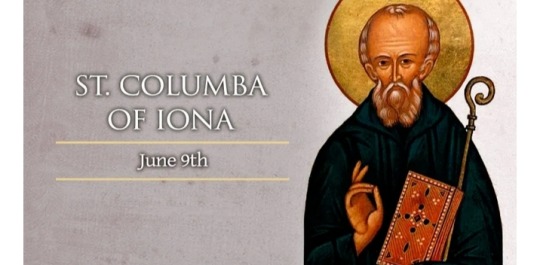
On June 9, the Catholic Church commemorates the sixth-century Irish monk and missionary Saint Columba of Iona, also known as St. Columcille.
One of Ireland's three patron saints, together with Saint Patrick and Saint Brigid, he is also sometimes called the “Apostle of the Picts” for his evangelization of Scotland.
He should not be confused with St. Columbanus (or Columban), a different Irish monk and missionary who lived slightly later and ended up in Italy.
Columba was born during 521, descended from royalty through his father. He was taught and mentored by the priest who baptized him and later attended a monastic school founded by Saint Finnian of Moville.
His own life as a monk began at the school, where he was also ordained a deacon.
The deacon went on to spend time in a different monastery and school run by another Finnian, Saint Finnian of Clonard.
Columba became a priest during this period, and along with eleven others from this same institution, he would become known as one of the “Twelve Apostles of Ireland.”
Columba also studied with Saint Mobhi of Glasnevin, before a disease epidemic forced him to return to his ancestral homeland of Ulster during 544.
He spent the next 15 years traveling, preaching, and founding monasteries.
It is not clear why, in 563, Columba left Ireland. By some accounts, he was simply going to preach the word of God.
Others claim that he had become involved in a battle between warring tribes, before repenting and taking on foreign missionary work as a penance.
On the island of Iona, located on Scotland’s northwest coast, Columba and his group of companions built simple monastic quarters and a church for themselves.
The priest-monk’s first missionary work was in the region of Dalriada, whose Celtic Christian inhabitants were lacking solid religious instruction.
His next effort was to convert the Picts of northern Scotland, a task that would take up most of the rest of his life.
He began by gaining entrance to the castle of King Brude, where the locked gates are said to have miraculously opened when the sign of the Cross was made.
The king welcomed the missionaries, believed the Gospel, and was baptized.
Columba’s evangelization of northern Scotland continued over the next three decades.
He and his companions met with some resistance from the native pagan Druids, but on the whole, they found remarkable success in spreading the Catholic faith and building up a network of churches and monasteries.
The island monastery at Iona remained his home base. It drew pilgrims looking to benefit from the priest-monk’s wisdom and his prayers.
He remained in touch with the Irish Church, making many trips back until he became too weak to travel.
Even in old age, Columba maintained an intense routine of prayer, fasting, and study.
After giving a final blessing to his monastery on 8 June 597, he died sometime in the early hours of the following day.
#Saint of the Day#Saint Columba of Iona#St. Columcille#Apostle of the Picts#Twelve Apostles of Ireland
6 notes
·
View notes
Text

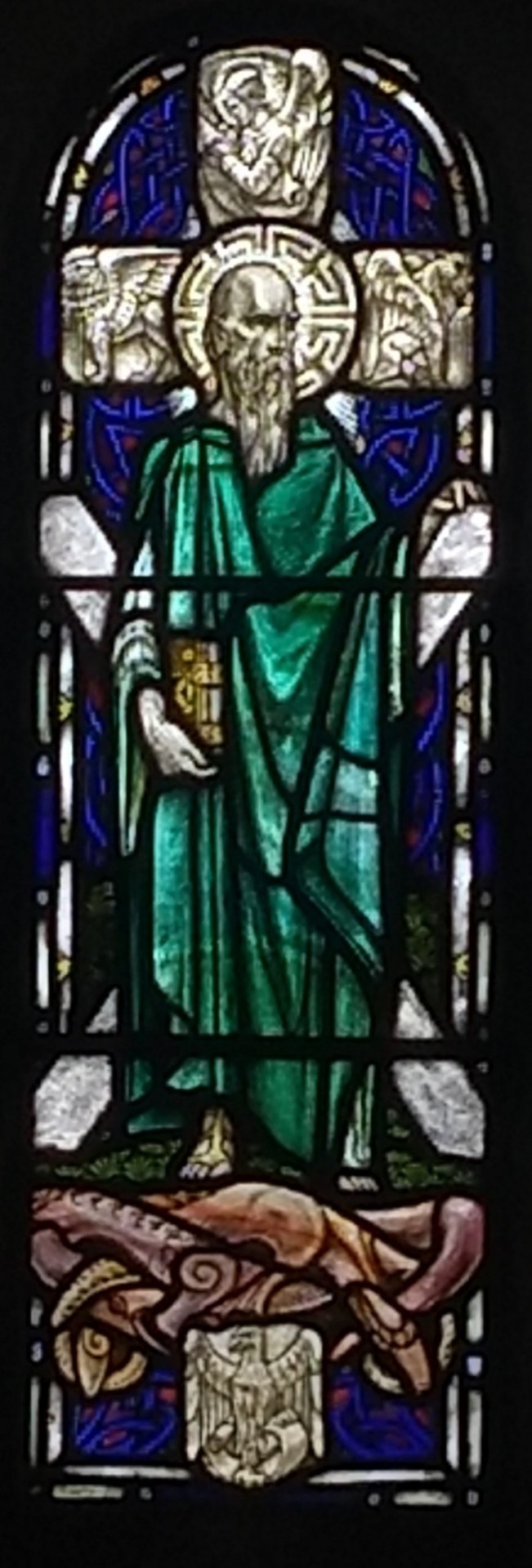


Stained glass from Saint Margaret's chapel in Edinburgh Castle
#stained glass#edinburgh#edinburgh castle#st margaret's chapel#st margaret#st andrew#st columba#william wallace
10 notes
·
View notes
Text
#OTD in 597 – Death of St. Colomcille (meaning “Dove of the Church”), also known as St Columba.
#OTD in 597 – Death of St. Colomcille (meaning “Dove of the Church”), also known as St Columba.
St Colomcille was a missionary monk who, some of his advocates claim, introduced Christianity to the Picts during the Early Medieval Period. He was one of the Twelve Apostles of Ireland.
St Colomcille was born on 7 December ca. 521 A.D. to Fedhlimidh and Eithne of the Ui Neill clan in Gartan near Lough Gartan, Co Donegal. On his father’s side he was great-great-grandson of Niall of the Nine…
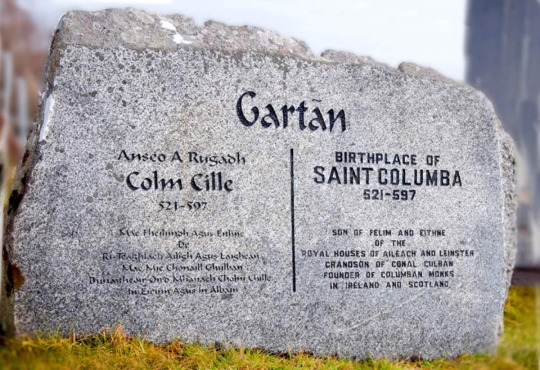
View On WordPress
#Battle of Cúl Dreimhne#Co. Down#Downpatrick#High King Dermott#Iona#Patron Saint of Derry#Scotland#St Brigid#St Comgall#St Molaisi of Devenish#St Patrick#St. Colomcille#St. Columba#St. Finnian#Twelve Apostle
11 notes
·
View notes
Photo

Happy Feast Day
Saint Columba
521-597
Feast day: June 9
Patronage: Ireland, Scotland, Derry, bookbinders, poets, floods
Saint Columba was born in Ireland of royal descent. He studied for the priesthood under many prominent churchmen, including St. Finnian, eventually becoming abbot. In 563, he sailed to Scotland evangelizing the pagans and establishing monasteries, including the abbey on Iona. Saint Columba is considered one of Irelands 12 Apostles loved by both the Irish and Scots.
{website}
47 notes
·
View notes
Photo
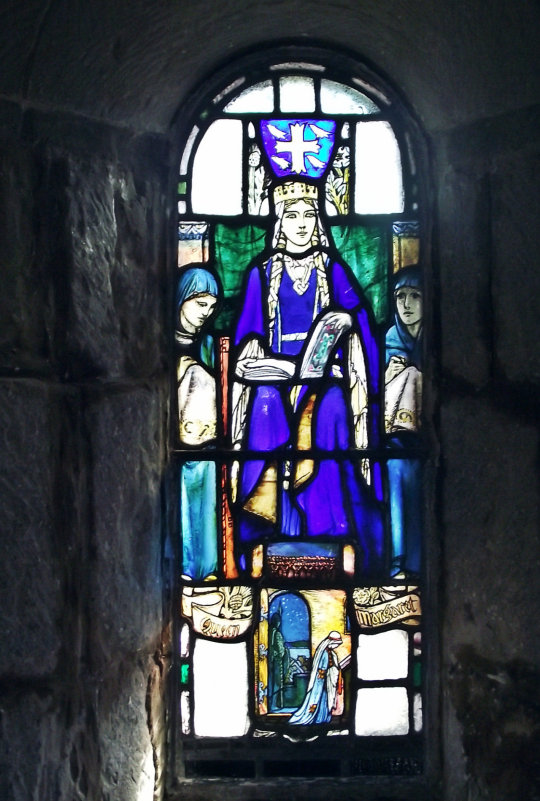


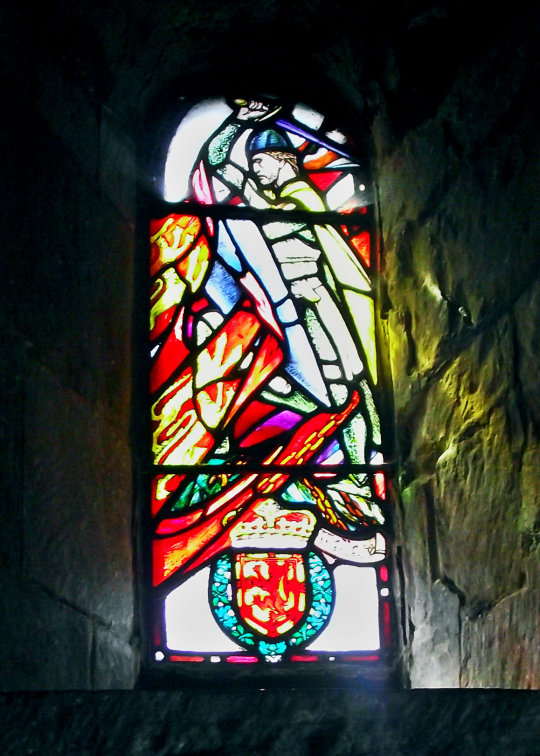
St Margaret's Chapel.
Final archive pics for now the beautiful stained glass windows in St Maragret’s Chapel, designed by Douglas Strachan and installed in 1922, depict St Margaret, St. Andrew, St. Columba, and Sir William Wallace.
#Edinburgh Castle#Edinburgh#Scotland#st margaret#st andrew.#St Columba#eir w#Sir William Wallace#stained glass#history#Archive
29 notes
·
View notes
Text
27th October
St Odran’s Day
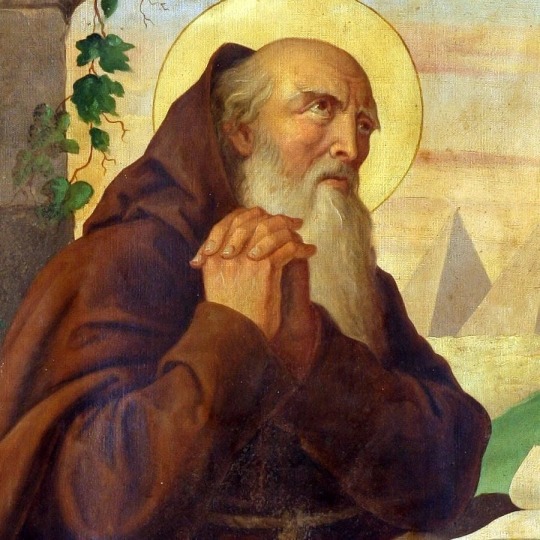
Source: AnaStPaul website
Today is St Odran’s Day. Odran was a sixth century Irish bishop and missionary who was a close companion of St Columba. The legend surrounding his death is one of the most extraordinary of that of all the early Christian saints. Columba built a new church on the island of Iona, but its foundations would not take. The only remedy for the collapsing building Columba could come up with was human sacrifice. Odran, by now an elderly man and who had long debated the nature of the afterlife with his mentor, volunteered to be the sacrificial victim, reasoning that this way he would find out the truth about Heaven and Hell. Odran was duly buried alive in the church’s new foundations. Sure enough, afterwards, the building stayed intact, so Columba ordered that Odran be retrieved from the ground. The monks dug and revealed the saint’s head, which immediately began talking, giving the nuanced message that Heaven was not all that it was cracked up to be and that the denizens of Hell were not universally miserable. Columba immediately brought an end to this heretical revelation by ordering the monks to cover his friend’s head before he could say any more.
Hunan sacrifice was most definitely not part of Christian tradition, but pagan religion frequently ensured the safety of new buildings by the killing of animals (and presumably before that, of humans) and burying them in the foundations. One can only assume that the story of Odran’s death was a repurposed pagan Celtic tale, which makes it a genuine curiosity. The fact that the story has a philosophical aspect only makes more intriguing.
This month also saw the brewing of the mighty October Ale in households across the British Isles. Fabulously strong, it was only brought out rarely in the autumn and winter months to warm the bellies of its drinkers, being kept locked away for the rest of the time.
2 notes
·
View notes
Text
ST COLUMBA'S CHURCH AND ROUND TOWER
The parish of St Colmcille’s Swords, has an interesting history extending right back to the 6th century. It was St Colmcille who brought Christianity to the area circa 560 AD.

View On WordPress
#2016#april#building of interest#Christianity#church road#County Dublin#Fotonique#graves#Graveyard#historic#Infomatique#landmark#medieval church walls#round tower#square clock tower#st Colmcille#st columba&039;s#swords#Tourist Attraction#William Murphy
0 notes
Text

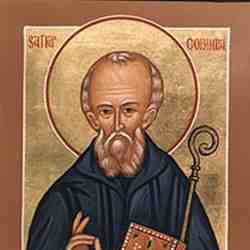
About St Barbara
About St Columba
PRE-SCHISM BRACKET ROUND 1
#st barbara#st columba#catholic saint tournament#catholic#catholicism#catholic saints#tumblr bracket#christianity#tumblr tournament#polls#theology#tumblr polls
8 notes
·
View notes
Text
been listening to too much lore podcast at work and started entertaining the concept of what writing an episode for that might look like and how for my irish cultural history class i happened to read allegedly the first report of the loch ness monster and now im like what if i wrote a thesis paper on accounts of cryptid slash supernatural event sightings
#.txt#im doing the non thesis option for a fucking reason i got like a b on my term paper for my first seminar class bc i wrote most of it#the day it was due. i cant write papers longer than like three pages i lose focus#also the argument of the paper would be I Am Unconvinced That This Alleged First Account Fits With Later Depictions#bc seriously the bit in the life of st columba thats supposed to be nessie is like. yes its a beast in loch ness but youd think#a pleiseosauresque creature would be described in more detail than having freaky teeth
0 notes